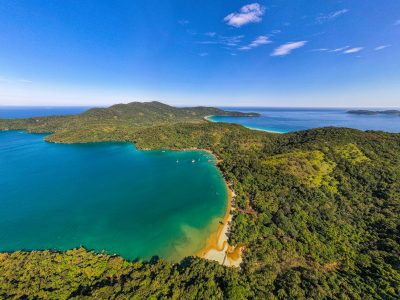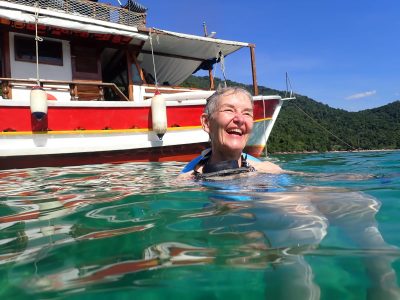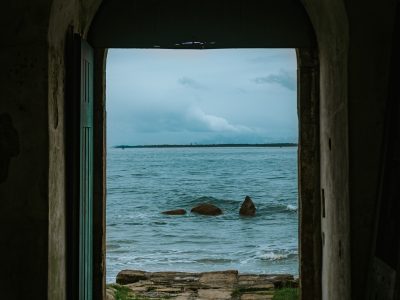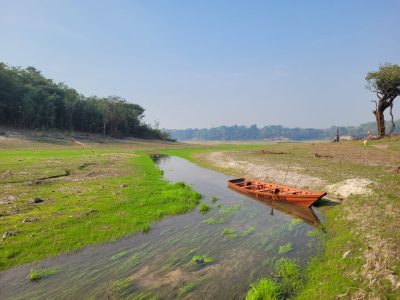The Jaguar Identification Project is a non-profit initiative dedicated to protecting and studying jaguars in Porto Jofre, Northern Pantanal. It involves citizen scientists, primarily tourists, to help build a comprehensive database on individual jaguars and understand their behaviors. The project is rooted in community participation, scientific integrity, and conservation ethics.
The Pantanal stands as the global epicenter for jaguars, not only because it harbors the highest population density of this feline but also because the jaguars here are more accustomed to human presence, facilitating monitoring and research. Through individual identification using their unique spot patterns, the project tracks the health, movements, and behavior of these animals, contributing significantly to their preservation.
To better understand how the initiative works, we spoke with the project’s founder, Abbie Martin, an American zoologist and sailor.
Check out the interview below:
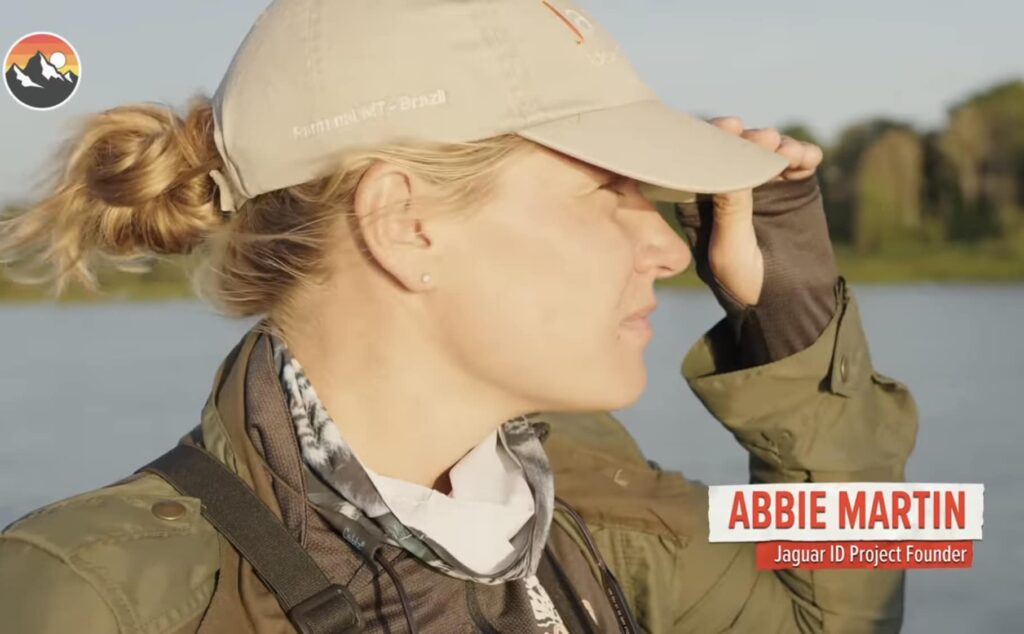
Gondwana Brasil: What motivated the creation of the Jaguar Identification Project?
Abbie Martin: The Jaguar Identification Project was born from the desire to better understand jaguar populations, their behavior, and their interactions with the environment, while also raising awareness about the Pantanal. Our goal was to create a systematic approach to identifying individual jaguars using citizen science. This approach would enhance conservation efforts and contribute to ecotourism by providing valuable data on these iconic animals.
GB:What were the main challenges you faced at the beginning?
AM: Early challenges included the absence of a comprehensive database of jaguar sightings and the difficulty of identifying individual jaguars due to their elusive nature. Establishing partnerships with local guides, ecotourism operators, and securing equipment for data collection were also significant hurdles.
On a personal note, as a woman in this environment and being an outsider, it was incredibly hard to gain acceptance. There were many times when I wanted to give up and return home. But my commitment eventually paid off, and the local community began to accept me and support the project. During the first seven years, I was running everything by myself. It wasn’t until 2023 that we received enough financial support to hire two Brazilian field assistants. Instead of taking a salary for myself, I chose to give it to them.
GB: How important is collaborating with local guides and tourism operators in identifying jaguars and collecting data?
AM: Collaboration with local guides and tourism operators is crucial because they are often the first to spot jaguars during their tours. As researchers, we can’t be present at every sighting. Their knowledge of the area, frequent sightings, and ability to gather photographic and observational data are invaluable in identifying individual jaguars and monitoring their movements and behaviors.
We verify and validate the information they provide, which allows us to use it in a structured scientific way, recognizing their efforts and providing opportunities for education and raising awareness. This partnership enhances the accuracy and scope of data collection, benefiting both research and conservation efforts.
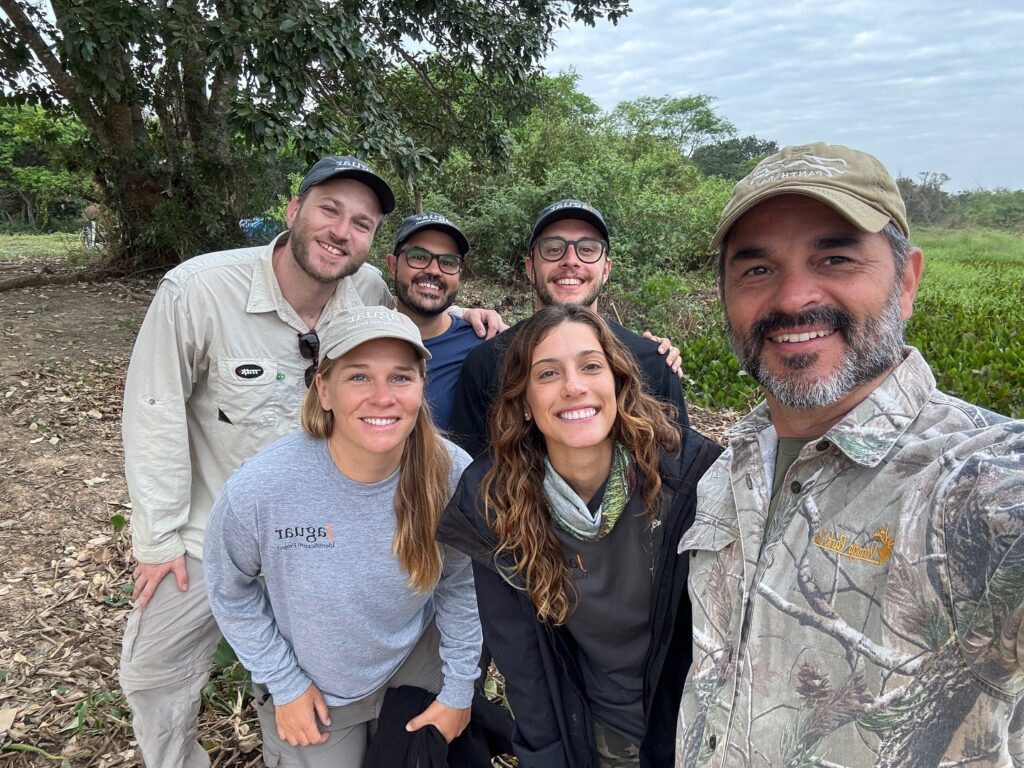
GB: How have the collected data contributed to understanding the behavior, relationships, and territories of these jaguars?
AM: The data collected has significantly expanded our understanding of jaguar behavior, social relationships, and territorial ranges. By identifying individual jaguars and tracking their movements over time, researchers can study patterns of predation, interactions with other wildlife, mating habits, the impact of human activities on their habitats and how this population is responding to extreme environmental events such as wildfire and drought. This information is crucial for making informed conservation decisions.
GB: What have been the main advances of the project in jaguar conservation in the Pantanal since its creation in 2013?
AM: Since 2013, the Jaguar Identification Project has made significant strides in jaguar conservation. These advances include the creation of the largest comprehensive database of jaguar sightings, the production of a Jaguar Field Guide, and the promotion of citizen science involving tourists and local guides.
The project has also contributed to better management practices in ecotourism, ensuring that jaguar habitats are respected and that human-wildlife interactions are conducted sustainably. Our recent findings on how jaguars respond to fire can also help future decision making.
GB: What are the future goals of the Jaguar Identification Project, both in terms of conservation and community and educational engagement?
AM: Future goals include expanding the project’s capacity to monitor jaguar populations more extensively across the Pantanal, increasing community involvement in conservation through education and outreach, and strengthening partnerships with local schools and community organizations. We are now conducting a long term camera trap grid project so we can monitor what is happening away from the river banks.
We will also embark on a riverine reforestation project to bring back the native trees and plants that were devastated in the 2020 and 2023 wildfires. At the same time the project aims to continue raising awareness about jaguar conservation while providing opportunities for local people to participate actively in protecting their environment.
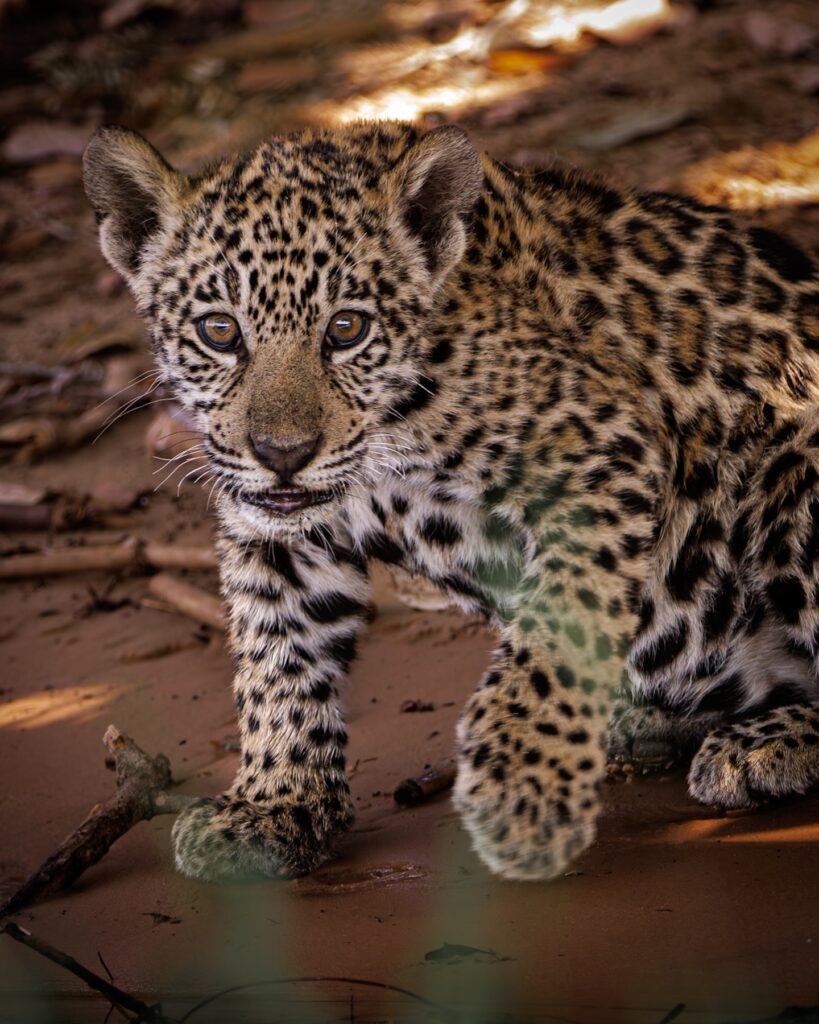
GB: We are going through difficult times with climate change, severe drought, and widespread criminal fires. Unfortunately, one of the affected areas is the Pantanal, home to jaguars and where the project is carried out. How is the project dealing with this, and what is it doing to mitigate the impacts of this disaster?
AM: The Jaguar Identification Project is addressing the challenges posed by climate change, drought, and fires by working closely with local organizations to monitor the impact of these disasters on jaguar populations and their habitats. The project has also shifted its focus towards long-term resilience, emphasizing the importance of habitat restoration and fire prevention efforts.
Through our long-term population monitoring and newly installed camera grid we will better understand how jaguar are responding and what we can do to help. What we are seeing is how important the riverine forest is to this species, which is why we are now going to embark on a native plant restoration project. Additionally, the team is advocating for stronger environmental protections and raising awareness about the need to mitigate these disasters through education, conservation policies, and local community involvement.
How about suggesting an unforgettable jaguar-watching experience to your clients, guided by experts? This immersive experience is available for travelers already booked for a trip to Porto Jofre — whether it’s a one-day or multi-day visit. The experience includes a lecture and half-day boat safari guided by a member of the Jaguar ID Project, where clients will learn about jaguars and help identify individual animals by their unique features.
Provide your clients with unforgettable Brazilian experiences. Get in touch to learn about our exclusive offers, access detailed itinerary files, and elevate your competitiveness in the market.

